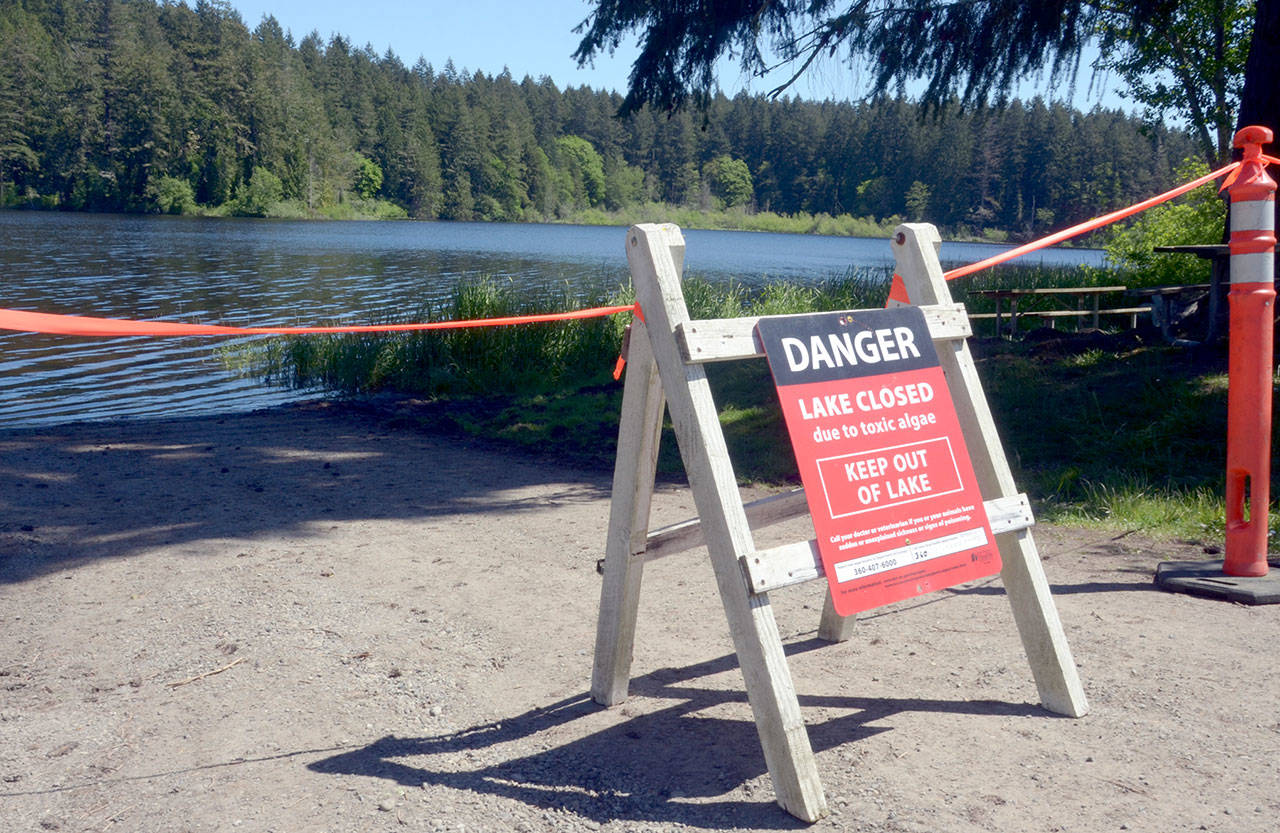PORT TOWNSEND — The Jefferson County commissioners are holding off on a decision on matching funds for a grant from the state Department of Ecology that would fund a study of the toxic algae blooms in Anderson Lake.
The lake near Chimacum has been forced to close every year since 2006 due to the high levels of anatoxin-a, a potent nerve toxin sometimes produced by blue-green algae blooms.
The commissioners held off Monday on a $16,666 matching fund for the grant from the Department of Ecology that would pay for a study of the hydraulic conditions of the lake and try to find a way to manage the toxic algae blooms.
Grant proposal
In the proposal from Jefferson County Public Health, the county would pull the $16,666 from the county general fund, which would fund 25 percent of the project.
The other 75 percent of funding would come from the Ecology grant, totalling $50,000.25.
The commissioners pulled the grant approval from their consent agenda at Monday’s meeting due to financial questions.
“We’re matching this state grant with general fund money to do a testing at a state park,” said Commissioner David Sullivan.
“It’s a question of what money we’re taking from the general fund. If it’s something like money from the Centennial Clean Water Grant, which is also state funds, then we’re happy to do it. If it’s money from our property taxes, I’d rather the state just cover the whole bill.”
Mike Dawson of Jefferson Public Health was out of the office Monday and unable to attend the morning meeting to answer questions.
“That’s the problem sometimes with our meetings being on Mondays,” Sullivan said.
“We get the packets on Friday and we can’t get too many questions answered since everyone is off for the weekend.”
Sullivan said the commissioners would likely revisit the issue at their meeting next week.
“If it was an emergency we’d push this through, but it can wait a week or two,” Sullivan said.
This year the lake closed in late May to swimming, fishing and boating due to high levels of the toxin and has not been reopened.
Water samples taken in May found 1.38 micrograms per liter of the anatoxin-a. The state’s cut off is only 1 microgram per liter of the toxin.
The toxin has been an ongoing problem for Anderson Lake, which has been tested monthly by Jefferson County Public Health since 2007.
The tests were first taken in 2006 after two dogs died after drinking water from the lake.
Anatoxin-a can cause illness and death in animals and humans within four hours of being ingested.
Since the tests in 2006, the lake made history in 2008 with the highest levels of anatoxin-a ever recorded, 172,640 micrograms per liter.
The blue-green algae found in Lake Anderson in naturally occurring and found in freshwater lakes across Washington State. However, sometimes those algae blooms produce toxins, which are released into the water. Why the toxins occur isn’t fully understood.
Other local freshwater lakes, like Lake Leland and Gibbs Lake, have not seen toxic algae blooms like those found in Lake Anderson, however the county does test those lakes monthly as well.
________
Jefferson County Editor/Reporter Cydney McFarland can be reached at 360-385-2335, ext. 55052, or at cmcfarland@peninsuladailynews.com.

